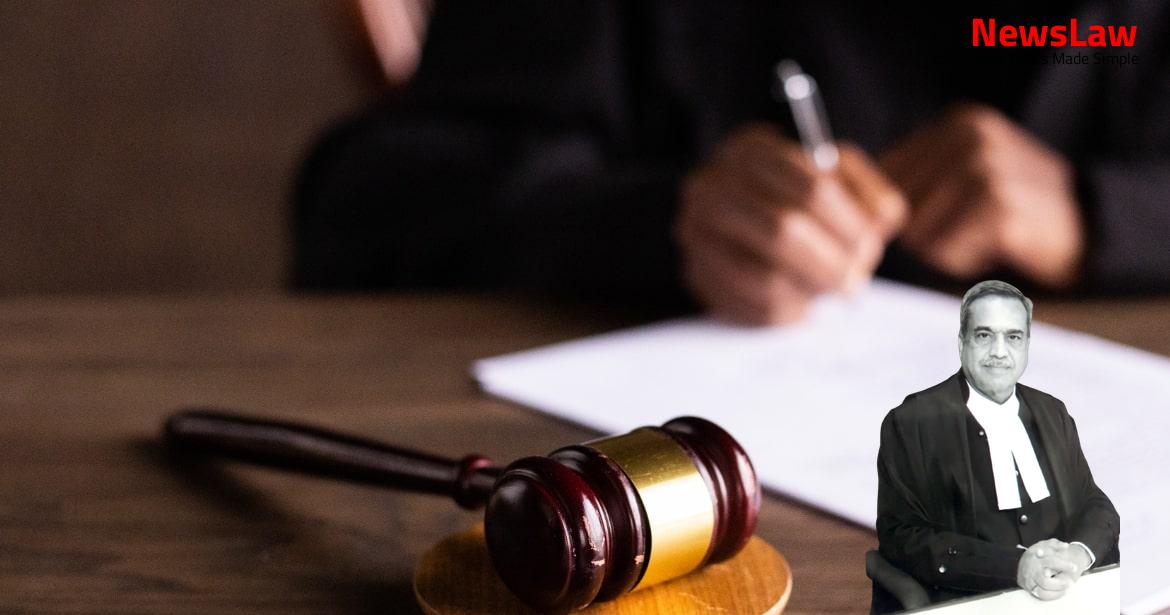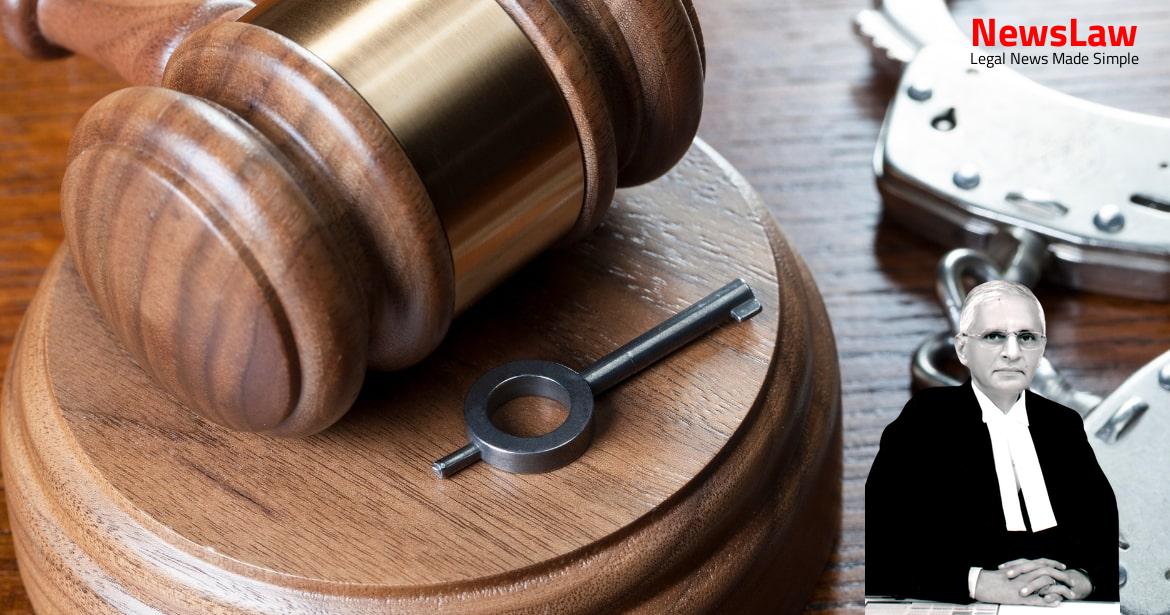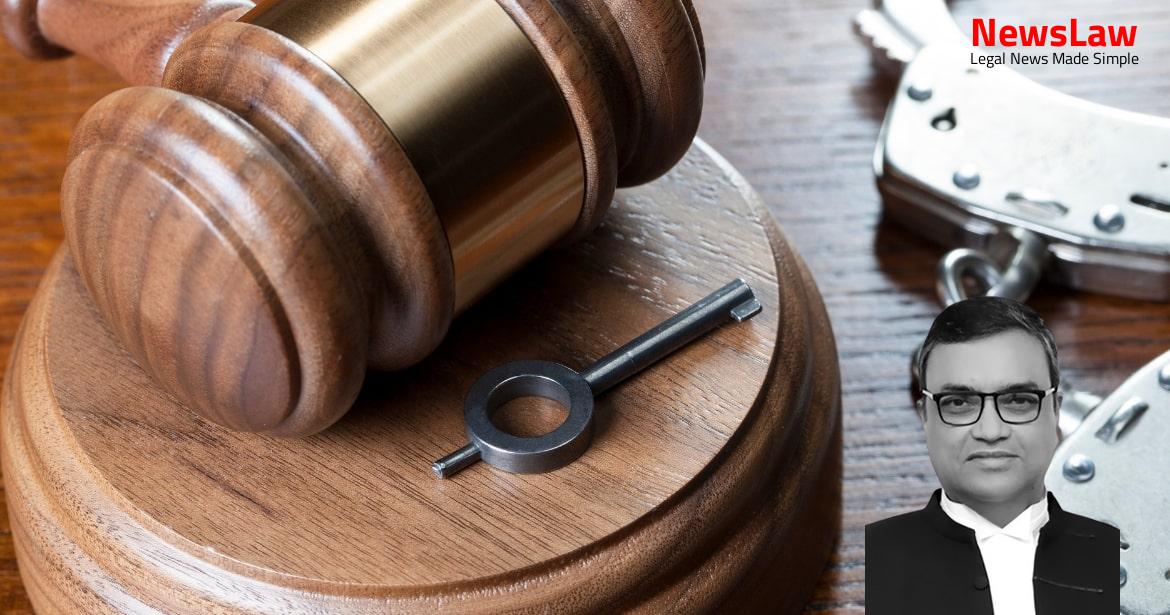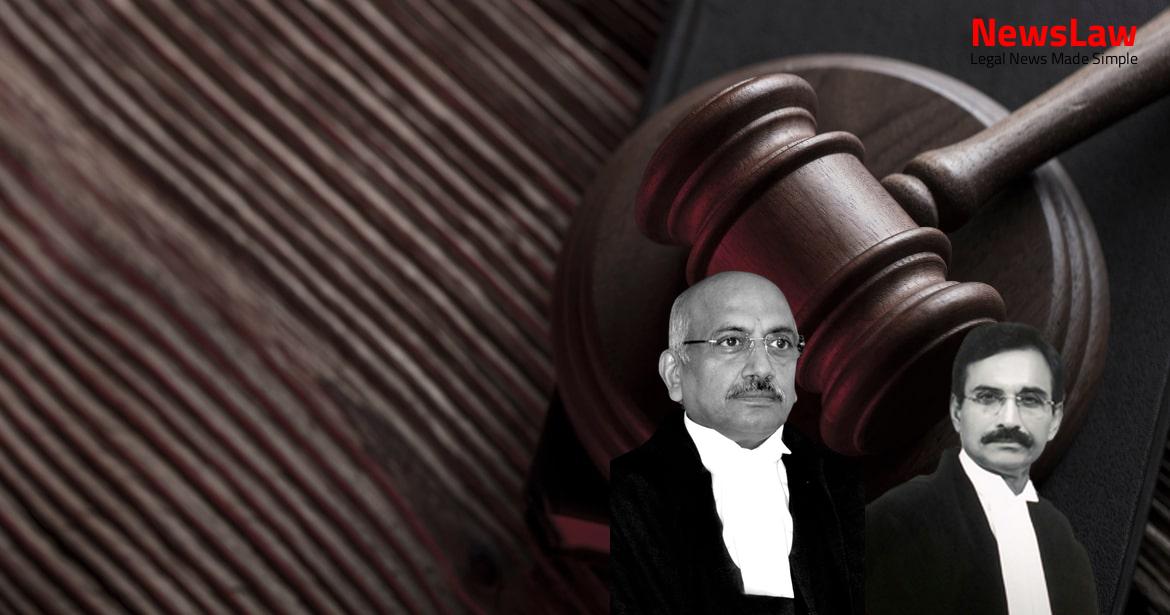In a recent legal case, the court’s analysis of witness testimonies and medical evidence led to the upholding of the conviction in an appeal for a murder case. The focus was on the reliability of evidence, including the recovery of the weapon, witness credibility, and the establishment of motive. The legal scrutiny provided valuable insights into the case, reinforcing the importance of thorough legal analysis in criminal proceedings.
Facts
- The accused preferred appeal before the High Court against their conviction for the offence under Section 302 r/w 34 of the IPC.
- Accused A1, Rakesh, was accused of using a country-made pistol to cause injuries to the deceased.
- Accused A2, Suresh, and A3, Anish, were accused of assaulting the deceased with knives.
- The trial Court found all the accused guilty and sentenced them to life imprisonment for the offence under Section 302 r/w 34 of the IPC.
- The accused were also convicted for offences under Sections 4/25 of the Arms Act.
- The High Court dismissed the appeal and confirmed the conviction and sentence imposed on the accused.
- Accused no.2, Suresh, did not file an appeal.
- The present appeal has been filed by accused no.1, Rakesh, and accused no.3, Anish.
- The trial was for the killing of Bhishampal Singh on 28.01.2006.
- The trial Court relied on the depositions of eye witnesses and medical evidence for convicting the accused.
Also Read: Electoral Malpractices in Mayor Election
Arguments
- ARG_PETITIONER: The defense argues that A2 & A3 inflicted injuries on the deceased after the deceased had died, therefore cannot be convicted under Section 302.
- The defense questions the reliability of the witness testimonies of PW1, PW2, and PW5.
- The defense highlights the difference between a ‘dagger’ and a ‘knife’.
- It is emphasized that the motive for the crime has been established.
- The defense contends that the accused have already served more than 15 years of sentence.
- There are doubts raised about the presence of PW2 at the time of the incident.
- The defense challenges the recovery of the weapon used by the accused.
- The defense claims that the prosecution failed to prove that the accused were present at the scene of the incident.
- The defense argues that the depositions of PW1 & PW2 should not be relied upon for the conviction.
- The ballistic report discrepancy does not undermine the credibility of eyewitness testimonies.
- Concurrent findings of fact by trial Court and High Court support the conviction.
- Rejection of evidence based solely on weapon recovery doubts is unwarranted.
- Eyewitness testimonies of PW1 & PW2 align with medical evidence of gunshot injury on deceased.
- Recovery of knife and absence of specific questions to Dr. Santosh Kumar do not weaken the case.
- Recovery memo with PW1’s signature establishes his presence during investigation.
Also Read: Balancing Power and Transparency: Electoral Bonds Struck Down, Disclosure Mandated
Analysis
- PW1 & PW2 are reliable and trustworthy eye-witnesses who saw A1 shoot the deceased with a gun.
- Medical evidence and Dr. Santosh Kumar’s deposition corroborate the gunshot injury.
- Injuries by knives on the deceased are also established, but there is no evidence to suggest the deceased was dead when these injuries were inflicted.
- The defense’s argument regarding the type of weapon used (dagger vs. knife) is refuted by witness testimonies and medical evidence.
- The ballistic report discrepancy does not invalidate the credible depositions of PW1 & PW2, leading to the conviction of A2 & A3 under Section 302 IPC with Section 34 IPC aid.
- The motive, presence, and participation of the accused are established through witness testimonies.
- Minor contradictions in witnesses’ statements are considered immaterial, as the core facts are corroborated.
- The recovery of the weapon used is not essential for convicting an accused, as demonstrated in this case.
- The accused can be convicted for the offence under Section 302 IPC even without the aid of Section 34 IPC.
- A1 was rightly convicted for the offence under Section 302 IPC based on direct evidence of using the gun and shooting the deceased.
- The lower courts were correct in convicting A2 & A3 for the offence under Section 302 IPC with the aid of Section 34 IPC.
- No interference from the Court is deemed necessary given the lack of evidence proving the accused were falsely implicated.
Also Read: Recall of Resolution Plan Approval: Legal Analysis
Decision
- Under the circumstances, the appeal fails
- The appeal deserves to be dismissed
- The appeal is accordingly dismissed
Case Title: RAKESH Vs. THE STATE OF UTTAR PRADESH (2021 INSC 321)
Case Number: Crl.A. No.-000556-000556 / 2021



